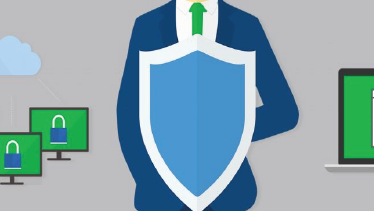The danger of advanced malware, particularly of ransomware, has become exponentially throughout the years. This implies we have to advance our procedures for alleviation, recognition and checking of vindictive conduct on our advantages. It’s an insightful move given the sturdiness of this danger. Without a doubt, ransomware, which endeavors to startle clients and associations into paying an expense to recover their captured information, is on the ascent and is something we’ll most likely observe for a considerable length of time to come.
To keep ransomware from mishandling our systems, numerous layers of security are required for finish scope. These in include: (1) Pre-rupture/Mitigation, (2) Active Breach, (3) Post-break, (4) Active Monitoring, and (5) Tuning Current Configurations. Tending to these five layers couple takes into consideration an exhaustive approach of protecting an undertaking against malware.
PRE-BREACH/MITIGATION
The initial step to protecting against ransomware is to stop it as near the endpoint as could reasonably be expected. This implies working with a hostile to infection seller that is appropriately arranged to help with safeguarding the framework against the manhandle of malware.
With this being said, not all hostile to infection is made equivalent. The old school attitude of utilizing marks to safeguard against malware has lost its edge with regards to guarding frameworks against present-day malware. Putting resources into cutting edge antivirus (NG-AV) that isn’t founded on marks yet is rather predicated on machine learning and regular assault areas helps with a higher rate of location among against malware merchants.
Meanwhile, there ought to be a survey of your present hostile to infection answers for ensure you have security programming introduced and fittingly designed on every essential framework.
Having hostile to infection calibrated, even with a NG-AV, won’t generally shield you from ransomware. That is the reason utilizing local inward approaches on the endpoints to confine where records can be introduced can go far in guarding against assaults.
Dynamic BREACH
The second layer of barrier while making a malware defendable system is to have frameworks set up that will decide when a dynamic break is happening. These frameworks are intended to catch dangers that sidestep malware security on the endpoint (if the framework has endpoint assurance in any case) and issue a ready when a rupture is identified on the system.
This is done inactively, either by setting up system taps inside the center of the system and cautioning on client baselines or by using double dealing innovation/distractions (honeypots/honeytokens) that alarm to the nearness of something that shouldn’t have touched them.
Dynamic rupture innovation doesn’t stop dangers, yet it proactively informs of an assault that is as of now in progress. It will likewise help with restricting the extent of a reaction against an assault. Since this doesn’t depend on operators, it gives an all encompassing perspective of what may have been missed with endpoint AV specialists.
POST BREACH
The post-break resistance is firmly fixing to the dynamic rupture layer to decide precisely where the malware is being used. These frameworks are all the more forensically fit to begin bundle catches, search for known pointers of bargain (IoC) that are attached to the specific variation of ransomware, and give specialists the capacity to pinpoint what different frameworks in the system have similar records (or IoCs) as the contaminated frameworks.
This is an occurrence reaction and measurable apparatus to be utilized to detach frameworks that are genuinely contaminated, otherwise called Endpoint Detection and Response (EDR). A number of these frameworks are reliant on operators introduced on them to finish this errand except for sandboxes, which is the reason the dynamic rupture innovation helps with filling the openings of missing specialists in this required layer.
Dynamic MONITORING
With the frameworks set up now to shield and alarm against malware, the following bit of the outline is to screen the system 24×7. Since malware will commonly lay torpid for a considerable length of time or weeks, there’s a should be reliably taking a gander at cautions and notices that originate from the malware insurance frameworks which have been set up.
Sending these logs to an outsider SOC, or setting up an inside SOC to follow up on these cautions while they’re happening, gives the best potential for achievement with regards to protecting against malware.
TUNING CURRENT CONFIGURATIONS
While propelled innovation may at present not be set up (E.G NG-AV, organize peculiarity devices, criminological IoC, sandboxing, and so on), there are still regions of change in the system that can be chipped away at to safeguard against malware.
This incorporates confirming all frameworks are fixed (both outsider and OS), establishing that each framework is running the suitable current AV specialists, tuning the AV approaches to be more prohibitive with regards to examining documents, blocking servers from egressing to the web, denying split burrowing on the VPN, compelling all frameworks through an intermediary, and checking that you have avant-garde spam identification, appropriately portioned systems, and most vital of all reinforcements of every one of your information.
CONCLUSION
Making a system that is impenetrable to ransomware, or malware when all is said in done, is practically inconceivable, however there are inside tunings of current frameworks that can help with making it harder for malware to taint your system while you sit tight for the financial plan or execution of more propelled innovation.
There is no silver projectile with regards to safeguarding against malware, simply the capacity to square what you can and contain what gets in. The speedier you can react against something that slipped past your barriers, the better possibility you need to moderate the hazard advancing.
